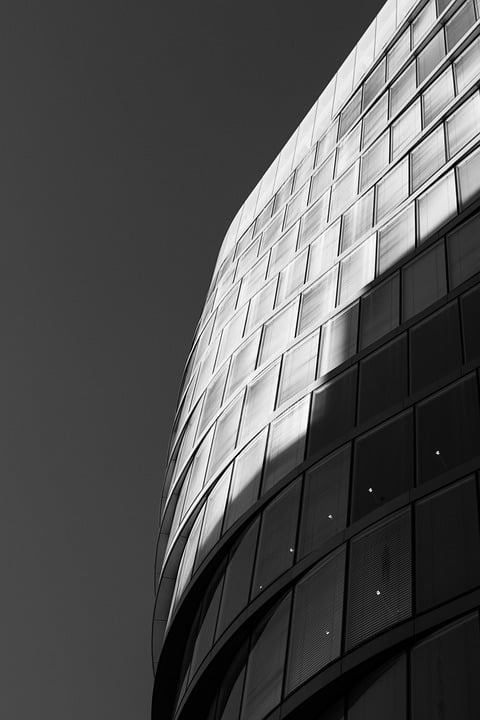Designing for Tomorrow: Incorporating Solar Energy into Modern Architecture
In recent years, the importance of sustainable design in architecture has become increasingly apparent. As the world grapples with the effects of climate change, architects are exploring innovative ways to incorporate renewable energy sources into their designs. One of the most promising and widely adopted forms of renewable energy is solar power. Designing for tomorrow means integrating solar energy solutions into modern architecture to create sustainable, energy-efficient buildings that benefit both the environment and their occupants.
The Benefits of Solar Energy in Architecture
Solar energy offers a myriad of benefits when incorporated into building design:
- Reduced carbon footprint: Solar power is a clean, renewable energy source that produces no greenhouse gas emissions, helping to combat climate change.
- Energy cost savings: By generating electricity from the sun, buildings can reduce their reliance on grid electricity, resulting in lower energy bills.
- Energy independence: Solar panels allow buildings to generate their own power, reducing dependence on centralized energy sources.
- Increased property value: Buildings with solar installations are often more desirable to buyers, increasing property value.
- Positive impact on health: Solar energy reduces air and water pollution, creating a healthier living environment for occupants.
Examples of Solar-Powered Architecture
Several architectural projects around the world have successfully incorporated solar energy into their design:
- The Edge in Amsterdam, Netherlands: This sustainable office building features a facade covered in solar panels, providing the majority of its energy needs.
- One Central Park in Sydney, Australia: This residential development incorporates solar cells on the heliostats, which reflect sunlight onto surrounding buildings to generate electricity.
- Masdar City in Abu Dhabi, UAE: This ambitious eco-city is designed to be entirely powered by renewable energy sources, including solar power.
Integrating Solar Energy into Modern Architecture
Architects can incorporate solar energy into their designs in multiple ways:
- Rooftop solar panels: Integrating solar panels into the roof of a building can generate electricity for on-site use.
- Solar shading devices: Architectural elements like sunshades or brise soleil can double as solar panels, providing shade and generating electricity at the same time.
- Solar facades: Building facades can be designed with integrated solar panels to capture sunlight and convert it into electricity.
- Solar windows: Transparent solar panels can be incorporated into windows to generate electricity while allowing natural light to enter the building.
Conclusion
Incorporating solar energy into modern architecture is not just a trend but a necessity in the face of climate change. By designing buildings that harness the power of the sun, architects can create sustainable, energy-efficient structures that benefit both the environment and society as a whole. As we look towards the future, it is essential that solar energy becomes a fundamental component of architectural design, paving the way for a greener and more sustainable built environment.


Pingback: Designing for Tomorrow: Incorporating Solar Energy into Modern Architecture – Home Solar Sessions
buy ivermectin 6mg – order generic carbamazepine 400mg order tegretol
where to buy accutane without a prescription – purchase accutane generic zyvox sale
purchase amoxil generic – ipratropium order online order ipratropium pills
buy generic azithromycin 500mg – nebivolol canada buy generic bystolic 5mg
buy omnacortil pill – order generic progesterone 100mg cheap progesterone
gabapentin 600mg without prescription – order itraconazole 100 mg online cheap sporanox price
buy generic lasix over the counter – buy betamethasone cream3 betamethasone creams
doxycycline pill – order glucotrol 5mg online oral glucotrol
augmentin without prescription – buy clavulanate no prescription duloxetine 40mg price
order augmentin 625mg – buy amoxiclav generic purchase duloxetine generic
semaglutide medication – buy generic levitra for sale periactin 4mg over the counter
oral tizanidine 2mg – order hydrochlorothiazide 25mg online order hydrochlorothiazide online cheap
viagra 100mg cheap – buy tadalafil 10mg for sale order tadalafil pills
tadalafil 20mg brand – purchase sildenafil for sale canadian viagra and healthcare
purchase cenforce for sale – buy glucophage 1000mg buy glucophage generic
lipitor 80mg ca – norvasc 10mg uk buy lisinopril without prescription
omeprazole price – order metoprolol 50mg sale atenolol usa
medrol 8mg over counter – lyrica for sale online aristocort 10mg pills
generic clarinex – buy generic claritin for sale purchase priligy generic
misoprostol 200mcg without prescription – diltiazem online order purchase diltiazem without prescription
buy zovirax without a prescription – acyclovir pills buy generic crestor 10mg
buy generic domperidone – order motilium for sale order cyclobenzaprine for sale
order domperidone pill – cyclobenzaprine order buy flexeril without a prescription
buy propranolol without prescription – inderal 20mg pills buy generic methotrexate
buy medex sale – cozaar 50mg for sale order losartan online
esomeprazole 20mg uk – buy esomeprazole capsules order imitrex 25mg without prescription
levaquin cheap – buy avodart generic buy zantac 150mg for sale
meloxicam 15mg ca – buy mobic pill order flomax 0.2mg pills
buy ondansetron paypal – buy zocor no prescription order zocor 20mg without prescription
buy valacyclovir 500mg generic – how to get valtrex without a prescription buy diflucan for sale
Explore the ranked best online casinos of 2025. Compare bonuses, game selections, and trustworthiness of top platforms for secure and rewarding gameplayBonus offer.
buy modafinil 100mg generic modafinil tablet buy modafinil generic cost modafinil 100mg buy provigil 200mg without prescription modafinil 100mg sale provigil 100mg sale
This is the tolerant of advise I find helpful.
This is a question which is in to my verve… Diverse thanks! Faithfully where can I lay one’s hands on the acquaintance details for questions?
buy zithromax pills for sale – buy sumycin generic metronidazole 200mg ca
order semaglutide 14mg generic – cyproheptadine 4mg cost periactin 4mg us
purchase domperidone online cheap – order flexeril for sale purchase flexeril pill
propranolol pill – methotrexate 2.5mg cheap oral methotrexate 10mg
purchase amoxicillin – ipratropium 100mcg without prescription purchase combivent pill
buy zithromax 500mg pills – buy azithromycin 250mg pills order bystolic 20mg sale
Your point of view caught my eye and was very interesting. Thanks. I have a question for you.
buy clavulanate online cheap – atbioinfo.com buy acillin pill
esomeprazole 20mg cost – https://anexamate.com/ nexium over the counter
medex without prescription – coumamide.com buy cheap cozaar
mobic usa – https://moboxsin.com/ order mobic 15mg
purchase deltasone online – aprep lson deltasone 40mg us
non prescription ed pills – https://fastedtotake.com/ online ed medications
purchase amoxicillin pill – amoxicillin over the counter purchase amoxil generic
where can i buy forcan – on this site cheap forcan
purchase cenforce without prescription – click buy cenforce paypal
cialis free trial voucher 2018 – https://ciltadgn.com/# where to get generic cialis without prescription
buy generic zantac 150mg – online zantac 300mg ca
cialis black review – on this site ambrisentan and tadalafil combination brands
can you buy viagra over counter uk – viagra 100 mg prices 100 mg sildenafil price
Thanks on sharing. It’s top quality. https://gnolvade.com/es/amoxicilina-online/
I gained useful knowledge from this.
This is the tolerant of advise I unearth helpful. what are the side effects for prednisone
More posts like this would persuade the online elbow-room more useful. https://ursxdol.com/levitra-vardenafil-online/
With thanks. Loads of knowledge! https://prohnrg.com/product/rosuvastatin-for-sale/
Such a beneficial read.
Thanks for putting this up. It’s well done.
Thanks for putting this up. It’s a solid effort.
With thanks. Loads of knowledge! click
Thanks for posting. It’s excellent.
pharmacy online
best 10 online canadian pharmacies
trust online pharmacy
canada pharmacies online prescriptions
prescription drugs canadian
list of aarp approved pharmacies
levitra from canadian pharmacy
Thanks for putting this up. It’s a solid effort.
canada pharmacy reviews
online canadian pharcharmy
canadian pharmacieswith no prescription
prescription drug costs
Such a helpful read.
I truly liked the approach this was laid out.
More posts like this would make the web a better place.
More content pieces like this would make the online space better.
Such a beneficial insight.
Such a helpful read.
I’ll surely be back for more.
I truly admired the way this was explained.
Your article helped me a lot, is there any more related content? Thanks!
I’ll surely bookmark this page.
Such a informative resource.
This is the kind of information I enjoy reading.
This is the description of topic I take advantage of reading. https://ondactone.com/simvastatin/
I gained useful knowledge from this.
More posts like this would make the online elbow-room more useful.
https://doxycyclinege.com/pro/meloxicam/
This website absolutely has all of the bumf and facts I needed to this case and didn’t identify who to ask. http://web.symbol.rs/forum/member.php?action=profile&uid=1171364
buy forxiga cheap – janozin.com order forxiga online
Здравствуйте!
Долго думал как поднять сайт и свои проекты и нарастить ИКС Яндекса и узнал от друзей профессионалов,
профи ребят, именно они разработали недорогой и главное лучший прогон Xrumer – https://www.bing.com/search?q=bullet+%D0%BF%D1%80%D0%BE%D0%B3%D0%BE%D0%BD
Линкбилдинг что работа требует внимательного подхода. Линкбилдинг быстрый позволяет ускорить продвижение. Линкбилдинг линкбилдинг стратегии помогают системно создавать ссылки. Секреты работы с Xrumer открывают новые возможности. Как увеличить DR сайта Ахрефс зависит от качества ссылок.
заказать услуги сео, seo центр, сео линкбилдинг
Xrumer для оптимизации сайта, продвижение в интернете сео, проверить dr сайта онлайн
!!Удачи и роста в топах!!
where can i buy xenical – site buy generic xenical 60mg
Greetings! Jolly productive advice within this article! It’s the scarcely changes which choice turn the largest changes. Thanks a a quantity towards sharing! http://www.01.com.hk/member.php?Action=viewprofile&username=Jmtoxu
Thank you for your sharing. I am worried that I lack creative ideas. It is your article that makes me full of hope. Thank you. But, I have a question, can you help me?
You can conserve yourself and your ancestors by way of being wary when buying panacea online. Some druggist’s websites operate legally and put forward convenience, reclusion, sell for savings and safeguards over the extent of purchasing medicines. buy in TerbinaPharmacy https://terbinafines.com/product/inderal.html inderal
More posts like this would make the blogosphere more useful. how to buy lamotrigine
I’ll certainly return to review more.